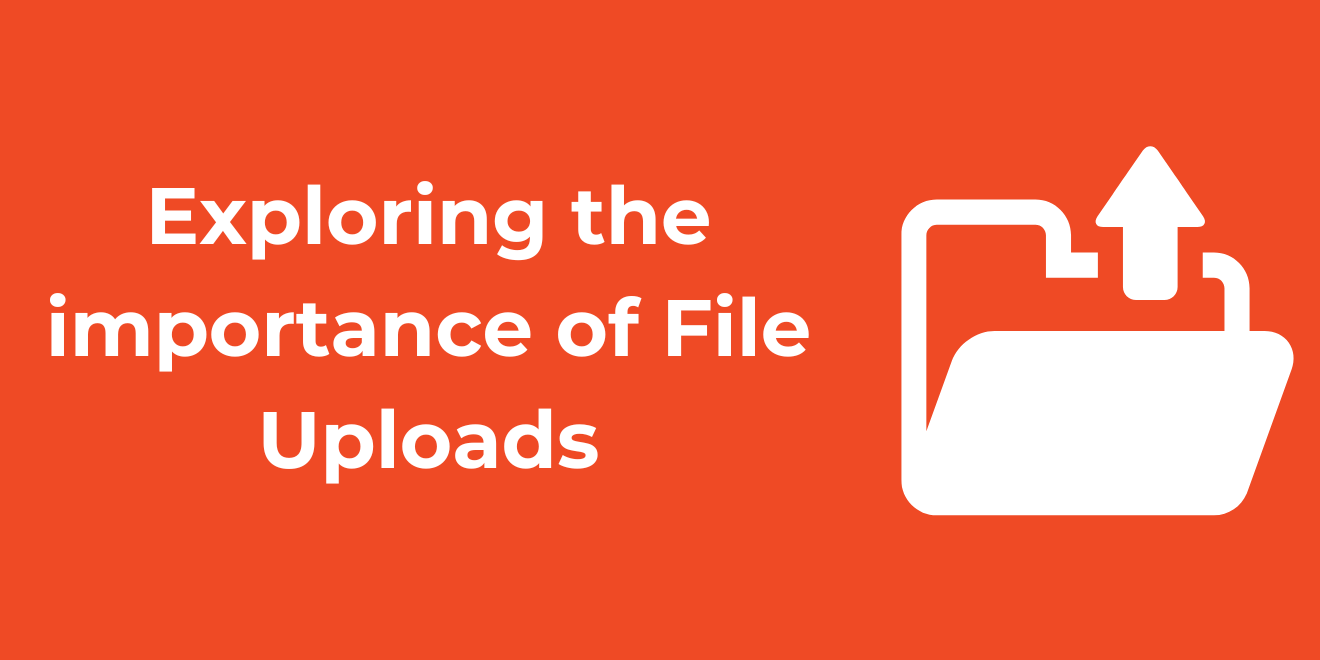File uploads are a fundamental part of web applications, yet they often fly under the radar in development discussions. From uploading photos on social media to submitting documents on job portals, file uploads play a crucial role in the user experience. A smooth file upload process can significantly enhance user engagement and conversions, while a poor one can lead to frustration and abandonment. In this article, we’ll dive into the complexities and challenges developers face with file uploads and how leveraging third-party solutions like Filestack can simplify these tasks.
The User Experience Conundrum
The Importance of Seamless File Uploads
A seamless file upload experience is vital for user satisfaction. When users can upload files quickly and easily, they are more likely to complete their tasks and have a positive perception of the brand. Conversely, slow, buggy, or confusing file uploads can lead to frustration, abandonment, and a negative brand image.
Third-party solutions like Filestack can significantly enhance this process, providing optimized and user-friendly interfaces that handle the intricacies of file uploads for you.
Accessibility Considerations
Accessibility is another critical aspect of file uploads. Ensuring that file upload processes are accessible to all users, including those using assistive technologies, is essential. This can include providing clear instructions, using accessible form controls, and ensuring compatibility with screen readers.
Filestack comes equipped with built-in accessibility features, ensuring all users have a seamless experience without extra effort from developers.
The Security Tightrope
The Need for Security
Security is paramount when handling file uploads. Without proper security measures, file uploads can expose applications to various vulnerabilities, such as malicious file uploads, cross-site scripting (XSS), and unauthorized access.
Common Vulnerabilities and Solutions
- Malicious File Uploads: Attackers can upload files containing malicious code. To prevent this, validate file types and sizes, and use secure libraries to handle file processing.
- Cross-Site Scripting (XSS): Attackers can upload files that execute scripts in the context of your website. Sanitize and escape user inputs to mitigate this risk.
- Unauthorized Access: Ensure that uploaded files are stored securely and access is restricted to authorized users only.
Third-party services like Filestack often provide robust security measures out of the box, including file type validation, virus detection, and secure storage, helping to safeguard your application against these threats.
Here’s an example of how to integrate Filestack for secure file uploads:
const client = filestack.init('YOUR_API_KEY');
client.picker({
accept: ['image/*', '.pdf'],
fromSources: ['local_file_system', 'url', 'imagesearch', 'facebook', 'instagram'],
maxSize: 1024 * 1024 * 10, // 10MB
onUploadDone: (res) => {
console.log(res);
// Handle the uploaded file
},
security: {
policy: 'YOUR_POLICY',
signature: 'YOUR_SIGNATURE'
}
}).open();
The Scalability Challenge
Handling Large File Uploads
Managing large file uploads and high volumes of uploads can be challenging. Large files can strain server resources, and high volumes can lead to performance issues.
Optimization Techniques
Optimization techniques such as file compression, chunking, and asynchronous processing can help manage server load and improve performance. For instance, chunking breaks large files into smaller pieces, which are uploaded separately and reassembled on the server.
Using a third-party file upload service like Filestack can simplify this process, offering scalable infrastructure and optimization capabilities to handle large and numerous file uploads efficiently.
Example of chunked file upload with Filestack:
const client = filestack.init('YOUR_API_KEY');
client.upload(filepath, {
onProgress: (event) => {
console.log(`Progress: ${event.totalPercent}%`);
},
onComplete: (result) => {
console.log('Upload complete:', result);
}
});
The Compatibility Maze
File Formats and Browser Compatibility
Developers must consider various file formats and browser compatibility issues. Different browsers may handle file uploads differently, and some file formats may not be universally supported.
Mobile-Specific Considerations
Mobile devices add another layer of complexity, with network limitations and varying device capabilities. Ensuring a smooth upload experience on mobile requires attention to these factors.
Third-party solutions like Filestack ensure compatibility across different browsers and devices, including mobile, easing the burden on developers.
The Error Handling Dilemma
Importance of Graceful Error Handling
Graceful error handling is crucial in maintaining a positive user experience. When errors occur, users should receive clear, helpful feedback.
Common Errors and Solutions
- File Size Limits: Inform users about file size restrictions and provide guidelines for reducing file sizes.
- Incorrect File Types: Validate file types on the client and server side, and provide users with information about acceptable file formats.
- Network Failures: Implement retries and provide feedback to users in case of network issues. Oh, Filestack helps with that too!
Providing Clear Feedback
Clear and concise error messages can help users understand what went wrong and how to fix it, reducing frustration and abandonment.
Third-party services like Filestack often handle these errors gracefully, providing clear and helpful feedback to users when issues arise.
Example of error handling with Filestack:
const client = filestack.init('YOUR_API_KEY');
client.upload(filepath).then((result) => {
console.log('Upload successful:', result);
}).catch((error) => {
console.error('Upload error:', error);
alert('Failed to upload file. Please try again.');
});Conclusion
File uploads are a critical yet often overlooked aspect of web applications. From user experience to security, scalability, and compatibility, numerous factors must be considered to ensure a smooth file upload process. Leveraging third-party solutions like Filestack can simplify these complexities, making it easier for developers to deliver a seamless and secure file upload experience. Prioritize file uploads in your web applications and consider integrating third-party tools to overcome the challenges involved.
A Product Marketing Manager at Filestack with four years of dedicated experience. As a true technology enthusiast, they pair marketing expertise with a deep technical background. This allows them to effectively translate complex product capabilities into clear value for a developer-focused audience.
Read More →
